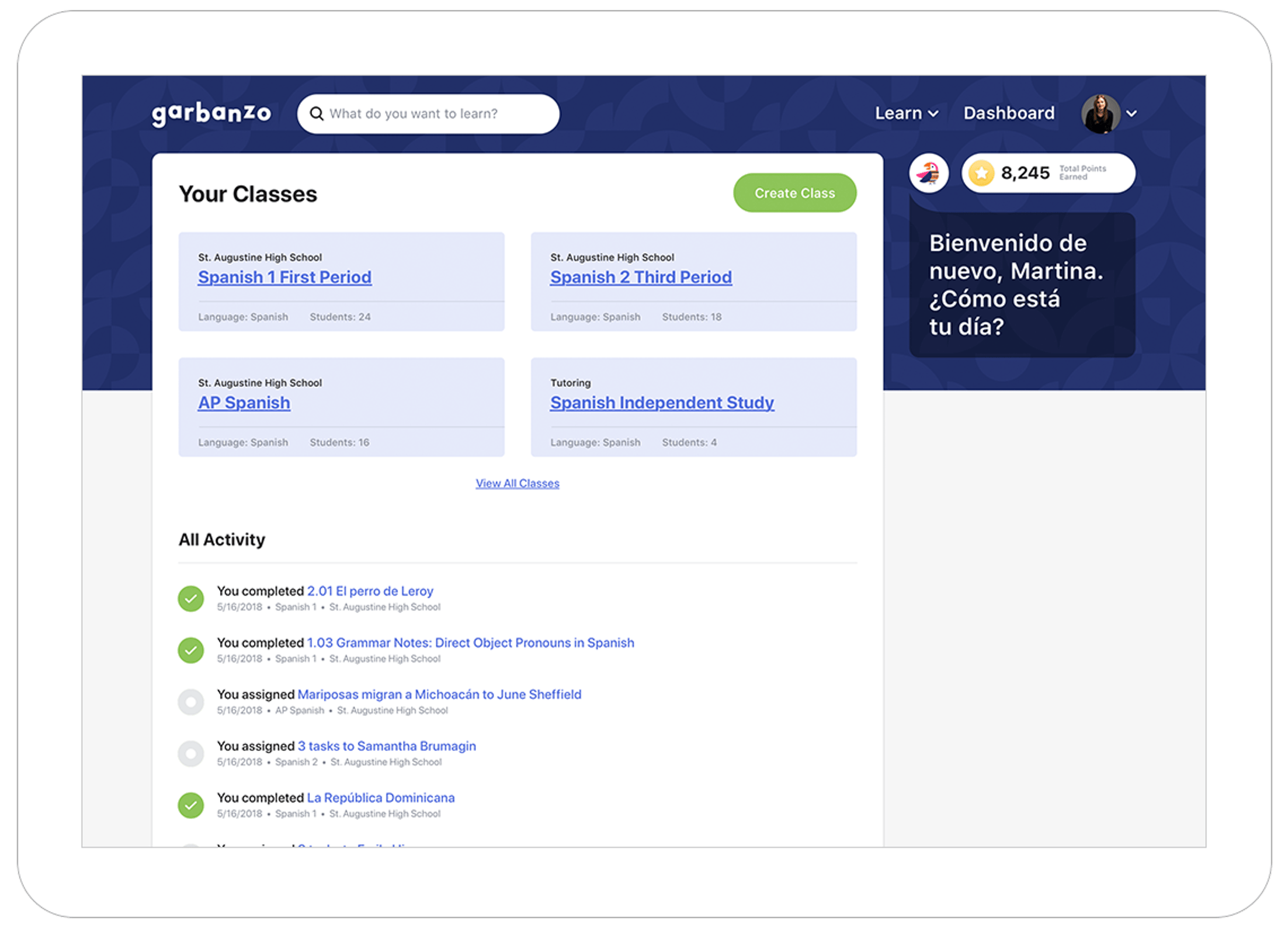By Jason VanLue
Garbanzo After One Year
It’s been a little over a year since we unveiled Garbanzo, an education technology app designed for Spanish teachers and students.
In that time, Garbanzo has been wildly successful. It is a great example of Zaengle’s unique ability to combine several critical components of a successful education technology product: business strategy, user experience design, and software engineering (read our case study). Subjectively, teacher feedback has been very positive, and we’ve seen increased efficiency and more effective learning outcomes because of Garbanzo’s integration into the classroom. Objectively, we are thrilled with these statistics:
Performance:
- 593GB Monthly Bandwidth
- 22.5million Requests / Month
- 80 Requests / Second
- 50k Unique Users / Day
Product:
- 200k Students
- 1.4million Assignments
- 12k Teachers
- 16k Classrooms
Understanding the modern classroom
Teachers are heroes, and the last thing they need is more things to do. Teachers regularly use Garbanzo as a supplement to their in-class curriculum and to manage absent students, but now Garbanzo has a whole new role because of the increase in remote learning. We quickly realized Garbanzo’s student and classroom management tools were just as important as the learning experience, so we wanted to make sure these tools were best-in-class.
In the last year we gave teachers the ability to add unlimited classrooms, assign lessons to classes or students, and monitor student progress completely online. We spent a lot of time in UX exercises, creating wireframes and prototypes that we tested with real teachers in the classroom. It’s a great example of Zaengle’s ability not just to build features, but to build the right features that work in the right way for the end user.

Engineered for performance & security
Garbanzo is an amazingly performant web application, which is necessary as more classrooms and students are added to the education technology platform each day. During an average school day, Garbanzo averages over 80 requests per second, and has to support an average of 50,000 unique users. In one recent month, Garbanzo served 600GB of bandwidth to users (amazing considering the application has no video content), and processed over 22million requests.
To support this amount of data and load, we engineered the application with a Graph database, a Nuxt front-end, and a Laravel API. We load balance the back-end, and host the front-end on Heroku which allows us to manage scale during periods of increased use. Additionally, because Garbanzo is an EdTech product, we ensure student and teacher privacy with full COPPA compliance, strict security practices, and a focus on web accessibility.
We are thrilled to be a part of Garbanzo, and love seeing both teachers and students thrive. If you have an EdTech software product or education website that needs design or development, we would love the opportunity to connect with you.
By Jason VanLue





